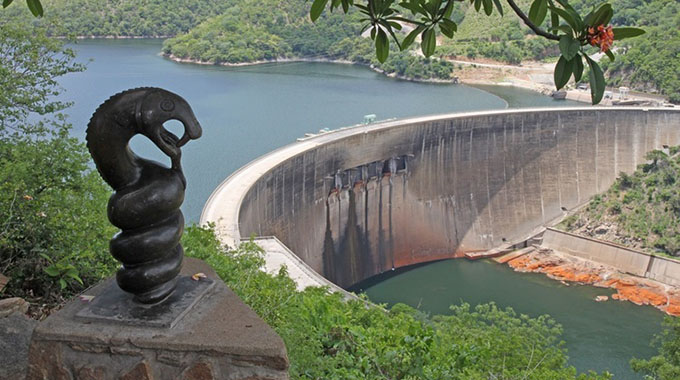Kariba plunge pool reshaping delayed

Sifelani Tsiko
Environment & Innovations Editor
The completion of work to reshape the plunge pool at Kariba Dam has been delayed because of unforeseen geology affecting the foundations for the required coffer dam, according to the Zambezi River Authority (ZRA).
“Kariba Dam rehabilitation work continued throughout the year and the authority made tremendous progress under the two components, namely the plunge pool reshaping and spillway gates refurbishment,” said Engineer Gloria Magombo, Permanent Secretary for the Energy and Power Development Ministry and ZRA co-board chair in the 2020 annual report.
“While the plunge pool reshaping works were scheduled to be completed by December 2021, the unforeseen coffer dam geological foundation challenges that were encountered had significant impact on the previously planned project timelines.
“As such, the estimated completion date was postponed from May 2021 to May 2024.”
The Zambezi River Authority, which is responsible for the dam and the management of the water in the lake, used independent consulting engineers to monitor the dam wall and they found that the plunge pool downstream of the dam needed to be reshaped to enhance its stability and reduce the backward scour towards the dam foundations.
The plunge pool was formed when the floodgates were opened.
This was common in the early years of the lake, when there was just one power station and even that one was not running flat out. So the floodgates had to be opened fairly often.
The building of the Kariba North station in the 1980s and the need by Zesa to use its entire water ration to generate power meant that opening of floodgates became progressively rarer and in recent years the entire flow out of Lake Kariba has been through the two power stations, whose outlets are at surface level.
With Kariba South now expanded it is unlikely that the floodgates will be opened except for testing since the extension was largely to give Zesa flexibility to manage peak load demand, a sequence of high-flood years will simply see the utility using very cheap hydro-power to fill a larger chunk of its base load requirements.









Comments